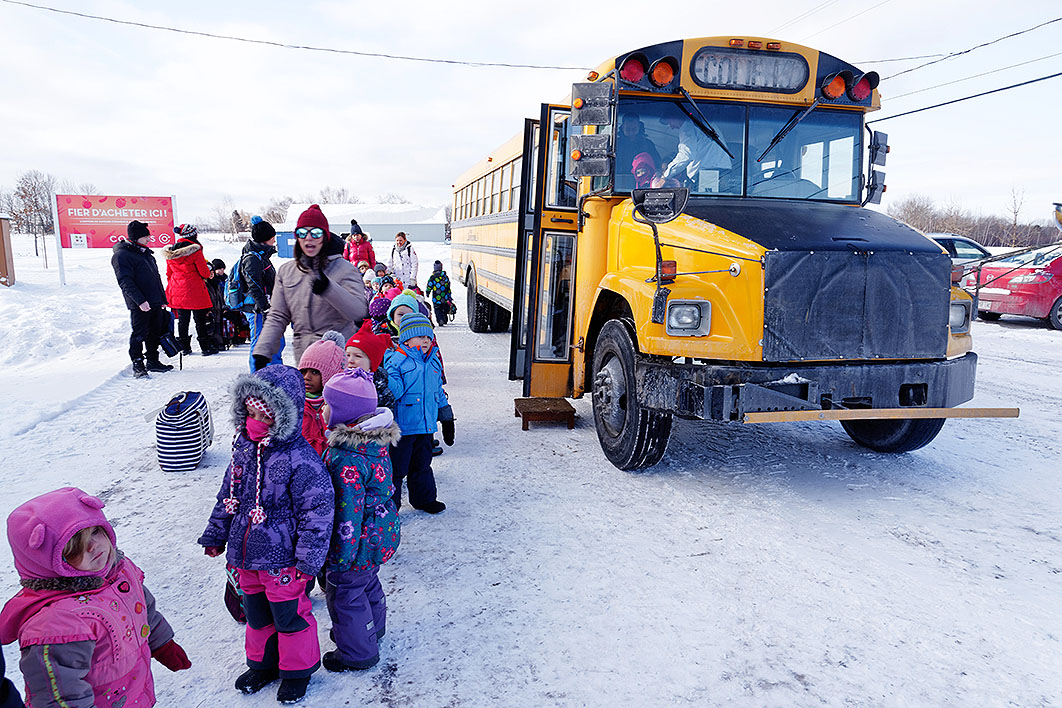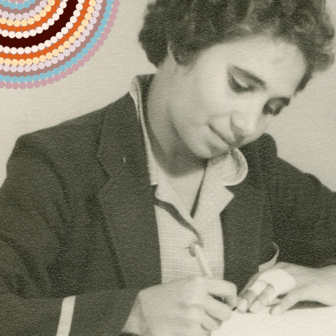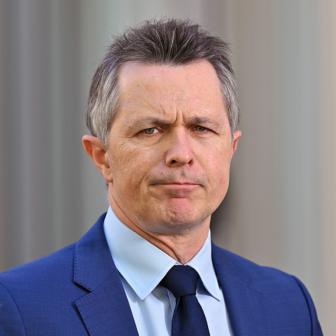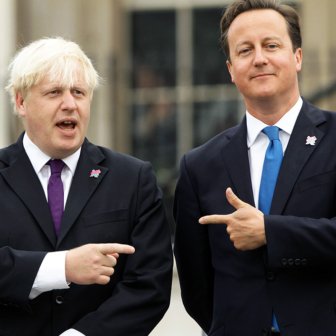In Ontario, Canada’s most populous province, 93 per cent of children attend public schools. In Alberta, the province that topped Canada for reading and science in the latest round of OECD tests, public schools enrol more than 94 per cent of students; in neighbouring Saskatchewan it’s 96 per cent. Here in Australia, meanwhile, less than 66 per cent of students go to public schools.
Does that striking difference in enrolments help explain Canada’s sustained educational success? And why is public education so much stronger in Canada than in Australia? The answer to the first question is a probable yes; the answer to the second is where things get really interesting.
Canada outperformed Australia in all subject areas in the 2018 Programme for International Student Assessment tests run by the OECD, just as it has in every round of PISA since the test’s inception at the start of this century. In maths, the difference between the average Australian and Canadian fifteen-year-olds is equivalent to nearly two-thirds of a year of schooling. In reading, PISA’s focus in 2018, Canada’s mean score of 520 was the sixth-highest among all participating countries and economies. Australia was in sixteenth place, on 503.
Where Australia’s Achilles heel is the performance of students from disadvantaged backgrounds, equity is one of Canada’s strengths. Reporting our PISA results, the Australian Council for Educational Research observed that “students from the highest socioeconomic quartile performed, on average, about three years of schooling higher than students in the lowest quartile.” In reading, the average gap between advantaged and disadvantaged kids was eighty-nine points. In Canada it was sixty-eight: still a large gap, but significantly smaller than in Australia.
Canada has not been immune to the decline in student performance witnessed across the OECD as a whole over the past two decades (it’s the smartphones, says Pasi Sahlberg), but it started well above Australia and has tapered off much less dramatically. Canada continues to be among the top-ranking countries in the world in international standardised tests, and remains the stand-out performer among English-speaking countries.
And while test scores attract the headlines, PISA reveals other differences between Canada and Australia that may be even more important. When participating fifteen-year-olds around the globe sit the PISA tests, they are also presented with a survey that asks, among other things, whether they expect to successfully complete tertiary education. Regardless of where they are in the world, disadvantaged kids are more likely to be pessimistic on this score, for fairly obvious reasons. But bright Canadian kids from tough backgrounds are more likely to believe they will succeed after school. In Australia, 26.9 per cent of high performers on the PISA tests who came from disadvantaged backgrounds didn’t expect to enter and finish post-school study. Among their counterparts in Canada, the figure is only 15 per cent. And the expectations gap between advantaged and disadvantaged high performers is considerably smaller in Canada (12.4 per cent) than it is in Australia (20 per cent).
The PISA student questionnaire also shows that disadvantaged Canadian children are more likely to feel they belong at school. Again, the trend across all countries is that children from educated and affluent families are more likely to feel attached to school than their disadvantaged peers. What the PISA survey shows is that the socioeconomic divide is smaller in Canada than it is in Australia (and across OECD countries in general).
These are hugely powerful indicators. If, as a teacher, all you know about a student is that they have high expectations of themselves and they feel like they belong at school, you know that a very large part of your job is done. It’s almost certain that these attitudes will be reflected in at least satisfactory results. And, conversely, if self-belief and a sense of purpose are lacking, an enormous amount of teacher time and effort will be needed to try to foster these basic conditions for successful learning.
Why are disadvantaged Canadian fifteen-year-olds more likely than their Australian peers to feel school is a place where they belong? Why are they more optimistic about their prospects after school? And why is there a much smaller gap between the test results of advantaged and disadvantaged kids of that age?
The countries that tend to absorb the lion’s share of attention in Australian education policy debate, like Finland and Singapore, are cohesive and compact societies, very unlike our own. Either comparison is limited by the fact that it is not at all easy to isolate the impact of schools from the societies of which they are a part. So it’s not clear whether we should attribute differences in PISA results to education policy or to the Nordic countries’ very low levels of poverty and inequality or the Confucian cultural tradition in East Asian societies.
Canada and Australia share common histories and deep cultural similarities. Each has a diverse population thinly spread across huge land masses; each educates a large proportion of students from immigrant backgrounds (35 per cent in Canada, 28 per cent in Australia) as well as an Indigenous student population affected by the legacies of European conquest and colonisation. Schools in both countries are shaped by their federal political systems, with education being a provincial responsibility in Canada as it is a state responsibility here; and both countries have “Washminster” political cultures, in dialogue with both the individualistic, small-government ethos of American politics and the European example of strong public services and social safety nets.
In other words, the differences in educational outcomes exist even though Canadian society looks much like our own. So it’s more likely that education policies are responsible. And the most obvious structural difference between the two education systems is found in Canada’s extremely high public school enrolment share and the marginal position of fee-charging non-government schools, which enrol just 7.4 per cent of Canadian schoolchildren. As a consequence, children at any given Canadian school are much more likely to reflect a broad cross-section of Canadian society than in Australia, and concentrations of poverty and privilege are much less pronounced.
This alone is likely to affect students’ achievements at school. “A great deal of theoretical and empirical literature shows that the socioeconomic composition of a school has an effect on a student’s achievement, regardless of their own socioeconomic status,” says Laura Perry, a researcher in educational disadvantage and inequality at Murdoch University. “On average, having less segregated schools leads to higher achievement, both for individual students and actually overall because it tends to raise up the lower achieving students or the less advantaged students.”
Drawing on earlier PISA data, Perry observed that 74 per cent of Canadian students attend a high school whose only entrance requirement is local residence. In Australia, where students from affluent and educated backgrounds tend to gravitate towards each other in fee-charging non-government schools and state selective schools, the figure is just 29 per cent. Local, comprehensive public schools in Australia are consequently more than likely to have a preponderance of disadvantaged students, forming the lowest level in a stratified social hierarchy.
The OECD employs what it calls the Index of Social Inclusion to measure the variation in the socioeconomic composition of student populations between schools. In the PISA 2018 survey, egalitarian Norway topped the world on this measure, at 91 per cent, meaning that one Norwegian school looks pretty much like the next in terms of the kids who go there. Peru was at the bottom, with 49 per cent, while Australia, on 76 per cent, was similar to the United States and a little worse than the OECD average. On 85 per cent, Canada looked a lot more like Norway.
A distinct, though related, measure is the relative concentration of high- and low-performing students in particular schools. In Canada, as the OECD observes, “low- and high-performing students are clustered in the same schools less often than the OECD average.” In Australia, the strugglers are lumped together at some schools while the high-flyers congregate elsewhere with other high achievers.
The consequences are vividly illustrated by the different expectations among disadvantaged kids in Canada and Australia. If your parents didn’t go to university, you’ll find it harder to envisage going there yourself. If you find yourself in a school where none of your classmates is considering further study as a post-school option, it becomes that much harder to imagine it as a possibility. If you are at a school with a preponderance of low-achieving, disadvantaged peers, the subjects offered are going to be less academic in nature and the teachers are going to pitch lessons accordingly. If you grow up in Australia, you are more likely to find yourself in this scenario than if you are born in Canada.
Concentrating a large group of disadvantaged and low-achieving students together will also make it harder for a school to recruit and retain teachers, because teaching and learning conditions are inevitably so much more difficult. As the Australian Council for Educational Research’s head researcher, Sue Thomson, has pointed out, Australian teachers with a master’s degree are more likely to be found in front of the high-achieving offspring of the well-educated and well-off. In Canada, teachers with postgraduate qualifications are just as likely to be teaching disadvantaged students as their privileged peers.
Some gifted and determined young people will defy their surroundings; but for most, the school environment will powerfully inform their interests, identity, hopes and expectations, and will significantly affect their educational outcomes. Because there is less segregation of advantaged and disadvantaged children than in Australia, disadvantaged students in Canada tend to do better, and socioeconomic status is a weaker predictor of school performance. This is the connection between the very high enrolment share of Canada’s public schools and the country’s strong educational outcomes.
“I would attribute Canada’s success to taking public schooling seriously,” says Anthony Di Mascio, an educational historian at Bishop’s University in Quebec. “I think even with all of its problems and its tensions, Canada has remained committed to public schooling. It is a leader in the world in terms of its commitment to this project of schooling for all.” Louis Volante, professor of education at Brock University in Ontario and editor of Socioeconomic Inequality and Student Outcomes: Cross-National Trends, Policies, and Practices, concurs. “We have a comprehensive system in Canada,” he says. “Systems that have more differentiation in terms of school choice tend to have two patterns. One pattern is that they have lower overall achievement and then the second thing is they tend to have bigger gaps between their high and low achievers.” And that, indeed, is the Australian story.
If Canada’s educational success is at least partly attributable to the strength of its public education systems, what explains that commitment to public education? When Sarah Mitchell became NSW education minister last April one of her first moves was to visit Canada. In time-honoured fashion, the state opposition attacked Mitchell’s overseas trip as a “post-election holiday” in the wake of the Berejiklian government’s return to power. But, as we have seen, the choice of Canada as an international reference point demonstrated considerable wisdom.
If Mitchell was to be criticised, it was not for going to Canada but for missing the main attraction when she got there. While the minister observed some more or less interesting features of Canadian schools — a strong emphasis on maths; extensive investment in remote and rural schools; centrally administered, province-wide co-curricular programs — she appears to have overlooked the factor that does most to explain the two countries’ different educational outcomes.
When Mitchell was in Toronto, she visited Jesse Ketchum Public School, a local, comprehensive school similar, in broad outline, to any local public school in New South Wales. But just fifteen minutes away, Mitchell could have seen a very different kind of public school. Saint Paul VI Catholic School is fully publicly funded, does not charge any admission fees, and faces exactly the same obligations to enrol all-comers as Jesse Ketchum does. But like 1400 of Ontario’s public schools, which together educate over half a million children, it is also — unmistakably — a Catholic school. It is what is called a separate denominational school. Religion forms an integral part of the school’s curriculum; school life is shaped by Catholic services and rituals; and it is governed by the Toronto Catholic District School Board, led by trustees who are elected by Catholic ratepayers in Metropolitan Toronto (who must themselves be Catholic). In other words, Saint Paul VI is as Catholic in character as any Catholic school in Australia.
But it is also as public as any public school in Australia. “They are complete public schools; they’re not selective,” says Anthony Di Mascio. “It wouldn’t be the school that could select the student that chooses to attend the Catholic school. It would be the parents. They decide. A Catholic parent wanting to send their child to a Catholic school, even if that child has special needs that the school might not want to take on financially — they wouldn’t be able to refuse that child.” The only difference between Saint Paul VI Catholic School and a typical Australian public school is the obvious one: Saint Paul VI is part of a public system that accommodates different views about the role of religion in education. And this accommodation helps explain why the overwhelming majority of young Canadians attend public schools. The possibility of choosing a Catholic or secular education, within a free, comprehensive public system, entirely removes one major reason for opting out.
Canadians stress that there is no single Canadian education system, and that every province is different (the national government doesn’t even have an education department). Ontario doesn’t provide any funding to non-government schools; other provinces do. Ontario and Quebec have both French- and English-language public schools; other provinces don’t. Catholic schools are part of the public systems in Ontario, Alberta and Saskatchewan, but not in other provinces.
The reasons for these differences are largely historical. The law passed by the British parliament in 1867 to create the Dominion of Canada, the Constitution Act, protected existing schools that served minority religious and linguistic communities in the confederating provinces. The effect was to guarantee full public funding of Protestant schools in Quebec and Catholic schools in Ontario (and later in Alberta and Saskatchewan, when they were carved out of the Northwest Territories in 1905). In a province like British Columbia, which had no Catholic system when it entered confederation, the provisions of the Constitution Act did not apply. Much later, in 1997, Quebec eliminated denominational schools and created secular French- and English-language public systems, a long-term result of the quiet revolution against the Catholic Church’s grip on power in that province.
Given the marked variation between Canadian provinces, denominational public schools can’t be the only reason for public education’s strength across the whole country. The Canadian researchers I spoke to give the impression that Canadians feel a sense of pride and attachment to their public schools that is similar to the way Australians feel about Medicare. But a comparison between Canadian provinces also suggests that religious public schools are a significant reason for the very different status of public education in Canada.
The proportion of students attending non-government schools in the three provinces with denominational public schools, Ontario, Alberta and Saskatchewan, is just 6.7 per cent, 4 per cent and 2.5 per cent respectively. In British Columbia, a system with no Catholic public schools that looks more like Australia’s, the non-government enrolment share increases to 13 per cent. Likewise, about 10 per cent of students opt out of the public system in Quebec.
The contrasting fates of fifteen-year-olds in Canada and Australia reflect different choices made well over a century ago. In their own ways, both countries exhibit a significant degree of path dependence. In a place like Ontario, Catholic public schools are taken for granted and enjoy majority public support. In the 1980s, the provincial government extended full funding of Catholic schools to years 11 and 12, beyond the requirements of the Constitution Act, which pre-dated late secondary schooling. But where it might logically follow that Ontarians would support the extension of full public funding to other faith-based schools, that is not the case. Indeed, such a proposal was roundly rejected at the 2007 provincial election, and many regarded it as one of the main reasons for the defeat of the Progressive Conservatives, led by John Tory, the current mayor of Toronto.
The sectarian balance of power created by the union of Protestant Ontario and Catholic Quebec was notably absent in nineteenth-century Australia, and so we set off in a different direction from Canada, deciding all public schools would be secular. In practice, that meant that religious parents — particularly among Australia’s large Catholic population — could either access a publicly funded education or enrol their children, at their own expense, in schools that fully reflected their worldview. But they couldn’t do both.
Today, our ingrained ways of thinking about schools continue to reflect these long-forgotten decisions. We assume that public schools have to be secular, and that religious schools can only exist outside the public system — even now, when government and non-government schools receive similar levels of public funding.
Like all good travel, observing Canada’s schools challenges the assumptions and categories we have come, only half-consciously, to rely on. As surprising as the discovery that public schools can be religious is the insight that the Canadian path to greater equity does not necessarily entail less choice. It just involves a different kind of choice from what we are used to in Australia, because the availability of religious public schools means it can be equally exercised by all, irrespective of a capacity to pay fees, pass entry tests or meet any other school enrolment criteria. Students choose schools; schools do not choose students. As a result, rich and poor, advantaged and disadvantaged, high achievers and low achievers are much more evenly spread across Canada’s schools, with happy consequences for student outcomes.
Denominational public schools have their critics, and in Ontario opposition has gradually increased from about 20 per cent in the 1980s to more like 40 per cent today. In 2015, the Elementary Teachers Federation of Ontario abandoned their previous position and called for one secular public school system. A central grievance is that Catholic schools are enrolling non-Catholic children, competing for enrolments with other public schools. Others argue that it is unfair that non-Catholic teachers can’t seek employment in Catholic schools, despite the fact that those schools are publicly funded. One group is pursuing a constitutional challenge on the grounds that full public funding of only one faith group denies the equal treatment required by the Canadian Charter of Rights and Freedoms.
In many respects these debates mirror those that occur in Australia, but they are variations around a different mean. A sympathetic Canadian researcher can plausibly claim that non-government school enrolments are “growing at a remarkable pace” when they increase from 5.2 per cent to 6.5 per cent of the total over the course of a decade. Canadian critics complain that 8 per cent of students at public Catholic schools are non-Catholics. And the one criticism that matters most when it comes to religious schools in Australia — that fees and enrolment policies exclude children from disadvantaged backgrounds — doesn’t feature at all in Canadian debate about denominational public schools.
In the long run, Canada’s more pluralist path has proved to be a much better way to establish and maintain a very broad-based consensus behind public education. Canadian Catholics never had to establish their own schools outside of the public system to ensure their children were educated as they saw fit. As Anthony Di Mascio comments, “That made buy-in to the public system that much easier in a country like Canada, especially in a country as diverse and divided as the population was. That may be one of the successes of the separate system, that it was able to get everyone on board with this public school project.”
As Australians contemplate continued decline in student achievement, as social disadvantage plays an ever more pronounced role in determining educational destiny, and as non-government schools increasingly enjoy the same public funding as government schools, it may be time to reconsider the way we conceived public education in the first place. •




